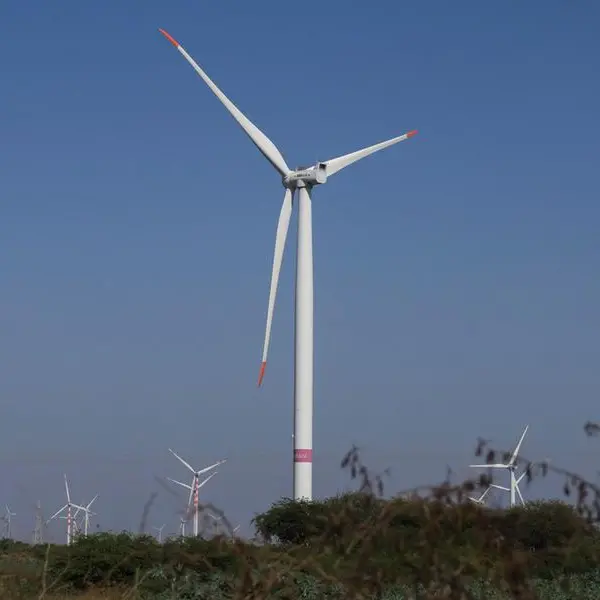PHOTO
Cargo containers sit idle at the Port of Los Angeles as a back-log of over 30 container ships sit anchored outside the Port in Los Angeles, California, February 18, 2015. Bob Riha, Jr., Reuters Image used for illustrative purpose
WASHINGTON, DC – The heart of Donald Trump’s proposed economic policies are big new tariffs on all goods imported into the United States. The former US president claims that tariffs will protect jobs, increase wages, and usher in a new era of American prosperity. Apparently convinced that he has found an economic panacea, Trump proudly calls himself the “Tariff Man.”
But a tariff is just a fancy name for a tax imposed on people who buy imported goods (and anything produced domestically using imported inputs), so the Trump proposal would squeeze all American households, with a particularly harsh impact on working people with lower incomes. Even if these tariffs do not plunge the world into a self-destructive trade war, US trade partners would likely retaliate – and that will hurt everyone who works in America’s successful and high-productivity export sector.
Trump has a degree from the Wharton School at the University of Pennsylvania, and so should know how tariffs work. Admittedly, he graduated in 1968, but the analysis of tariffs was well understood 50 years ago – and the basic facts remain the same.
Kimberly Clausing and Mary E. Lovely, two of the world’s leading experts on tax issues, estimate that the tariffs Trump wants to enact would cost the average US household more than $2,600. (This estimate was published by the Peterson Institute for International Economics, with which I was previously affiliated; but I was not involved in this report or any related work.)
Clausing and Lovely analyze a tariff regime that would impose a 60% levy on Chinese imports and a 20% surcharge on all other imports, which is Trump’s stated goal. The $2,600 per year increase in taxes for the median household represents an enormous loss of spending power (4.1% of their post-tax income). But for the bottom 20% of the income distribution, the “consumer loss from the proposed tariff” is even bigger – more than 6% of after-tax income.
In contrast, for the top 1% of the income distribution, the loss from tariffs is only 1.4%. This differential impact reflects the fact that lower-income people consume more imports, directly and indirectly, as a share of their spending than wealthier people do.
Clausing and Lovely also assess the effects of extending the Trump-era tax cuts, which are particularly beneficial to higher-income people. The combined net effect of extending those cuts – which Trump certainly wants to do – and imposing high across-the-board import tariffs would leave the top 1% better off. But everyone else would lose. So what Trump is proposing is actually a massive redistribution of income to the highest-income Americans.
In effect, Trump wants to increase taxes on working Americans to pay for tax cuts that primarily favor people who are already rich. The Republican Party repeatedly claims that it is against increasing taxes on most Americans. But that is exactly what Trump is proposing to do. As Grover Norquist, Founder and President of Americans for Tax Reform, says, “Tariffs are taxes.” And these taxes will be paid by Americans, not foreign companies, as Trump falsely claims.
Creating more good jobs in America should be a high priority for federal policymakers. But imposing high import tariffs will not do this. A much better approach would be to promote the development of breakthrough science and encourage the commercialization of these new ideas in companies that are created in the US. As Jonathan Gruber and I explained in Jump-Starting America, published in 2019, the US used to do a lot more of this (relative to the size of the economy) in the decades after World War II.
Fortunately, President Joe Biden’s administration, with bipartisan support, advanced this agenda in the 2022 Chips and Science Act, and Trump’s opponent, Vice President Kamala Harris, has put forward proposals that could move the US further in this direction. Sufficient funding to support this effort has been too slow to appear, but staying the course makes sense. The Harris campaign has proposed an “America Forward tax credit,” which “will be targeted at investment and job creation in key strategic industries.”
Seizing and retaining technological leadership matters. If you are the first to invent and the first to market, you have the opportunity to create more of the good jobs that will emerge in any new global industry. The US did this before, in the 1940s, 1950s, and 1960s – decades of shared prosperity during which tariffs were cut, not increased.
Simon Johnson, a former chief economist at the International Monetary Fund, is a professor at the MIT Sloan School of Management and a co-author (with Daron Acemoglu) of Power and Progress: Our Thousand-Year Struggle Over Technology and Prosperity (PublicAffairs, 2023).





















